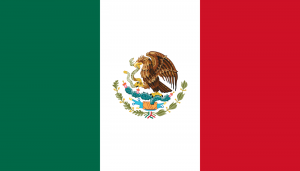 Population of Mexico 2016
Population of Mexico 2016
Based on the total number of births, total number of deaths, net migration rate, and the population of 2015, the current population of the United Mexican States is estimated to be about 123,278,559. The Mexican population makes up about 1.71% of the entire world’s population and ranks 11th in population rankings, behind Japan, but ahead of the Philippines. However, because of the rate that Mexico’s population is growing and the rate that Japan is decreasing, it will not be long before Mexico overtakes it in the population rankings. Mexico is the second-most populous country in North America, behind the United States, but ahead of Canada. At the end of 2015, the population was 122,332,399. Therefore, since the start of 2016, there has been an approximate growth of 946,160 people, or a growth rate of about 0.77%. Based on the total population and the total area, the population density of Mexico is estimated to be about 62.5 people per square kilometer or 161.87 people per square mile.
Geography of Mexico
Mexico is made up of thirty-one individual and sovereign states, each of which has its own constitution and government. However, they all fall under the jurisdiction of the Mexican Federal government. Mexico is located in North America to the south of the United States and to the north of Central America. Its total land area, 1,972,550 square kilometers or 761,606 square miles, make it the 14th largest country in terms of land area. The Rio Grande determines the northern border of Mexico with the United States and the borders between Guatemala and Belize determine the southern borders of Mexico. Mexico is made up of two mountain rages: Sierra Madre Oriental and Sierra Madre Occidental. The Sierra Nevada, which is also known as the Trans-Mexican Volcanic Belt, crosses through the center of the country. Lastly, the highest point in Mexico is the Pico de Orizaba, which reaches 5,700 meters or 18,701 feet.
Mexican Government
Mexico is a federation with a representative, democratic, and republican government. The Mexican Constitution was ratified in 1917 and established the three levels of government: the Federal Union, state governments, and municipal governments. The Federal Union is broken up into three branches: Executive, Legislative, and Judicial. The President of the United Mexican States, currently Enrique Pena Nieto, who has veto power over laws passed by the legislative branch and is the commander-in-chief of the Mexican military, heads the Executive Branch. The Legislative Branch is a bicameral Congress, composed of the Senate and the Chamber of Deputies. Congress makes laws, declares war, establishes taxes and the budget, and approves any diplomatic appointment. The Chamber of Deputies is made up of 300 deputies, while the Senate is made up of 128 Senators. The Judicial Branch is the Supreme Court of Justice, which has eleven judges that the President appoints. Lastly, the three major political parties in Mexico are the National Action Party, the Institutional Revolutionary Party, and the Party of the Democratic Revolution. The current President is a member of the Institutional Revolutionary Party.
Mexican Economy
Mexico is considered to have the 14th largest nominal Gross Domestic Product and the 10th largest Gross Domestic Product by Purchasing Power Parity. As a result, it is considered to be an upper middle-income economy and country. However, despite this economic status, the number of people living in poverty has increased. From 2006 to 2010, the number of people that were considered to be in moderate or extreme poverty increased from 35% to 46% of the population. In fact, the Organization for Economic Cooperation and Development ranked Mexico second in the economic disparity between the rich and the poor. Mexico has the second largest electronics industry in the world and it also produces more automobiles than any other North American nation.
Transportation in Mexico
Mexico contains 366,095 kilometers or 227,481 miles of roads, but only 116,802 kilometers or 72,577 miles are paved. However, despite the large difference in unpaved and paved roads, Mexico has the largest paved-road network in Latin America. The Secretary of Communications and Transport had proposed and started a high-speed train project, which was projected to cost about $25 billion. The train is supposed to connect Mexico City to Guadalajara. Lastly, Mexico has 233 airports, but 35 have about 97% of the total passenger traffic. Mexico City International Airport is the largest Latin American airport and the 44th largest airport in the world.
Mexican Cuisine
Due to the various early setters in the region, current Mexican cuisine has received influences from many different cultures, especially Columbia and Spain. In general, Mexican food tends to include rice, beef, maize, avocado, chili pepper, beans, and many other ingredients. However, due to geographical and climate differences, each region has its own specialty. Northern Mexico is known for beef, goat, and ostrich dishes. Central Mexico is known for carnitas and tamales. Southeastern Mexico typically makes spicy vegetable and chicken dishes. Lastly, in the regions near the Pacific Ocean or Gulf of Mexico, seafood dishes tend to be very popular.
Demographic Challenge in Mexico
Health Care in Mexico
Since the start of the 21st century, Mexico has taken many steps in improving its health care system. In December of 2006, the government established Health Insurance for a New Generation, which essentially granted insurance to babies. In May of 2009, the government established Universal Health Care for Pregnant Women. Then, in 2012, the entire United Mexican States established a universal healthcare system. Because of the universal healthcare system, health care is either completely free or subsidized for all citizens, if they choose to use the public health system. Typically, a visit to the doctor’s office will cost $25 and a night’s stay in a hospital will cost $30. Private hospitals and private insurance policies still exist and can be used if a person is willing to pay for it. In fact, private facilities account for 13% of the country’s total facilities. Lastly, 97% of the population has access to potable water and 90% of the country has access to sanitized water.

Education in Mexico
Education in Mexico has three main stages, two of which are considered compulsory: primary, junior high school, and high school. Primary school is made up of grades one through six. Some primary schools are bilingual, helping the students master another prominent language. The Spanish word for “school”, escuela, describes primary school. Junior high school is grades seven through nine. During this portion of schooling, students are introduced to specific topics such as Chemistry or World History. High school, which is not mandatory for students, is grades ten through twelve. During the first few semesters, the students take a common curriculum. However, near the end of the program, students can take specialized electives, such as philosophy or economics. Students can also enter into a vocational training program to train them for skilled labor jobs in the market. Lastly, only about 23% of Mexican youth (ages 23-35 years) have an undergraduate degree from a college or university.
Other Resources


